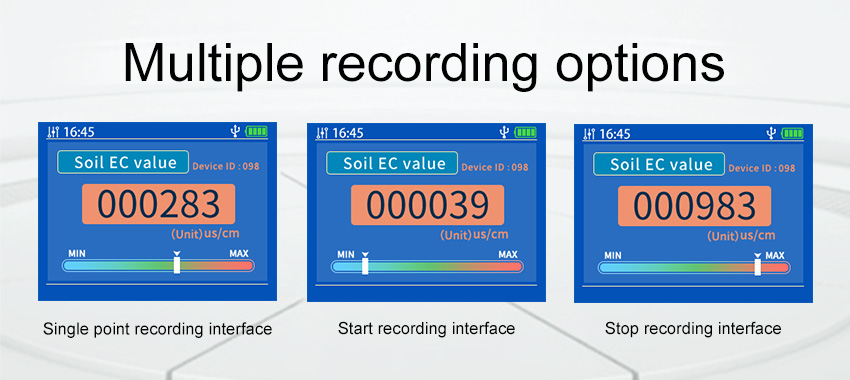Agriculture has always been a vital aspect of human civilization, providing sustenance and contributing to economic growth. However, farmers face numerous challenges in maximizing crop yields while minimizing inputs such as water and fertilizers. To address these challenges, soil sensor technology has emerged as a powerful tool in enhancing agricultural practices. This article explores the role of soil sensors in providing real-time data, optimizing resource management, and promoting sustainable agriculture.

Understanding Soil Sensor Technology:
Soil sensors are devices that measure various parameters in the soil, including moisture levels, temperature, pH, and nutrient content. These sensors utilize different technologies, such as capacitance, tensiometry, or optical sensing, to collect data from the soil. By providing accurate and real-time information, soil sensors empower farmers to make informed decisions regarding irrigation, fertilization, and overall crop management.
Real-Time Monitoring of Soil Moisture:
Soil moisture is a critical factor affecting plant health and growth. Soil sensors equipped with moisture probes can provide real-time data on soil moisture levels at different depths. This information enables farmers to optimize irrigation practices by ensuring that crops receive an adequate amount of water without wasting resources. By avoiding overwatering or underwatering, farmers can reduce water usage, minimize runoff, and improve crop productivity.
Precise Irrigation Management:
Traditionally, farmers rely on manual observations and their experience to determine when and how much to irrigate. However, soil sensor technology revolutionizes irrigation management by offering precise and data-driven insights. Soil sensors can be integrated with automated irrigation systems, where they act as feedback mechanisms, triggering irrigation when soil moisture levels reach a specific threshold. This approach reduces human error and ensures efficient water usage in agriculture.
Nutrient Management and Fertilizer Optimization:
Optimal nutrient management is essential for healthy plant growth. Soil sensors provide valuable information about soil nutrient levels, allowing farmers to make informed decisions when applying fertilizers. By accurately measuring nutrient content in the soil, farmers can adjust fertilizer application rates and timing, minimizing waste and environmental impact. This precision approach improves crop nutrient uptake, reduces costs, and mitigates water pollution caused by excessive fertilizer use.
Monitoring Soil Temperature and pH:
Soil temperature and pH directly influence plant growth and nutrient availability. Soil sensors equipped with temperature and pH probes enable farmers to monitor these parameters accurately. By understanding the soil’s thermal characteristics and acidity or alkalinity, farmers can make informed decisions regarding crop selection, timing of planting, and soil amendments. This knowledge promotes optimal growing conditions and enhances crop health and productivity.

Disease and Pest Management:
Soil sensors can contribute to effective disease and pest management strategies. Certain soil sensors can detect pathogens or pests present in the soil, helping farmers identify potential threats before they cause significant damage. Early detection enables prompt intervention measures, such as targeted treatments or crop rotation, minimizing losses and reducing the reliance on chemical pesticides. This proactive approach promotes sustainable farming practices and protects the environment.
Data Analytics and Decision Support:
The abundance of data generated by soil sensors necessitates effective analysis and decision support tools. Data analytics techniques can transform raw sensor data into meaningful insights, allowing farmers to discover patterns and make data-driven decisions. These insights can help optimize irrigation schedules, fertilizer application rates, and overall crop management strategies. By harnessing the power of data analytics, farmers can maximize yields, minimize inputs, and promote sustainable agriculture.
Integration with Precision Agriculture Systems:
Soil sensors can be integrated with other precision agriculture technologies, creating a comprehensive system for farm management. Integration with satellite imagery, weather data, and crop models allows farmers to gain a holistic view of their fields. This integrated approach enables farmers to make informed decisions based on real-time and localized information, optimizing resource allocation, minimizing waste, and adapting to changing environmental conditions.
Conclusion:
Soil sensor technology holds immense potential in revolutionizing agriculture by providing real-time data and insights for informed decision-making. From monitoring soil moisture to optimizing nutrient management and managing pests and diseases, soil sensors offer numerous benefits for farmers. By integrating soil sensor
